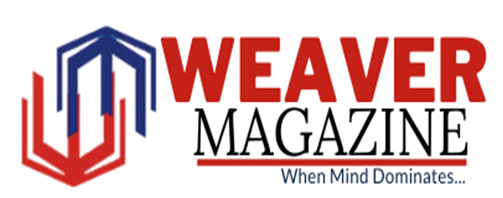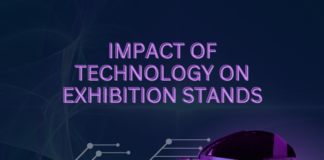In a world where digital interactions dominate, the authenticity of documentation has never been more crucial. Whether it’s verifying identities, onboarding customers, or approving transactions, organizations rely heavily on documentation to comply with regulations and prevent fraud. However, as processes move online, fraudsters have also become more sophisticated, using advanced technologies to forge, alter, and fake documents. To counter this, advanced document fraud detection tools have emerged as essential solutions for ensuring security, trust, and regulatory compliance.
The Rising Need for Advanced Document Fraud Detection
Document fraud is no longer limited to crude forgery or visible tampering. With the widespread availability of AI-generated text, image editing software, and deepfake technologies, the ability to create near-perfect fake documents has become easier and cheaper. Fraudsters can now manipulate not just textual content but also embedded data, metadata, and digital signatures.
This evolution in fraud techniques has prompted a rapid shift toward automation and intelligence in verification processes. Manual methods of document verification are no longer sufficient to detect subtle, machine-generated inconsistencies. Businesses, governments, and financial institutions are now turning to advanced document fraud detection tools that use artificial intelligence, machine learning, and computer vision to detect anomalies and confirm the authenticity of documents with high accuracy.
How Advanced Tools Are Changing the Landscape
Modern fraud detection tools are designed to go beyond superficial checks. These systems analyze the structure, content, and source of documents, detecting signs of tampering that the human eye might miss. Key features include:
- Optical Character Recognition (OCR): Advanced OCR engines can extract and analyze text from various document formats, including scanned images and PDFs, ensuring the content matches expected values.
- Image Forensics: These tools evaluate fonts, signatures, background textures, and other visual elements for consistency. Even slight variations or layering inconsistencies can be flagged.
- Metadata Analysis: Every digital document carries metadata—information about when, how, and where it was created. Advanced tools can uncover discrepancies in metadata that indicate tampering.
- AI-Powered Pattern Recognition: By training machine learning models on thousands of genuine and fraudulent documents, these tools learn to recognize subtle patterns and red flags unique to fake documents.
- Cross-Verification Capabilities: Integration with databases and APIs allows real-time validation of information such as national ID numbers, addresses, and legal identifiers, helping verify whether a document’s contents are legitimate.
These systems are often embedded into digital workflows, allowing for real-time decision-making and rapid onboarding without compromising security.
Application Across Sectors
The versatility of document fraud detection tools makes them applicable across a broad range of industries, including:
Banking and Financial Services
Financial institutions are highly regulated and are required to conduct thorough Know Your Customer (KYC) and Anti-Money Laundering (AML) checks. Fraud detection tools help banks verify documents submitted during account openings, loan applications, and transactions. This prevents fraudulent identities from slipping through the cracks and minimizes compliance risks.
Healthcare and Insurance
In healthcare, document authenticity is crucial for managing patient records, processing insurance claims, and ensuring regulatory compliance. Document fraud detection systems help identify altered prescriptions, fake medical certificates, and fraudulent claims, thus reducing losses and safeguarding patient trust.
Government and Public Services
Governments face challenges in validating identity documents such as passports, driving licenses, and visas. Advanced tools enable accurate verification at border controls, in social welfare programs, and during the issuance of public documents, helping prevent illegal activities like identity theft and benefit fraud.
E-commerce and Digital Platforms
Online platforms that involve buyer-seller interactions, rentals, or service bookings often require identity or qualification documents. Fraud detection tools ensure that the uploaded documents are authentic and not manipulated, fostering safer digital transactions.
Education and Recruitment
Academic certificates, degrees, and employment records are increasingly shared digitally. Document verification systems are crucial in detecting forged certificates or altered transcripts during admissions or recruitment, ensuring institutions and companies only engage with legitimate candidates.
Improving Compliance and Reducing Risk
One of the most significant benefits of using document fraud detection tools is their impact on compliance and risk management. Regulations such as GDPR, KYC, AML, and CCPA require organizations to implement robust identity verification and data protection measures. Failure to comply can result in substantial fines and reputational damage.
By integrating advanced document fraud detection systems, organizations can:
- Ensure compliance with regulatory requirements by validating documents through secure, transparent processes.
- Maintain digital audit trails of document verification, essential for regulatory reporting.
- Reduce operational risks related to onboarding fraudulent customers or processing illegitimate claims.
- Streamline internal processes through automation, reducing manual error and improving overall efficiency.
Moreover, these tools support a risk-based approach to compliance. Instead of applying the same level of scrutiny to every document, systems can flag higher-risk items for additional review, allowing resources to be used more efficiently.
The Role of AI and Machine Learning
AI and machine learning play a pivotal role in the evolution of document fraud detection. These technologies allow systems to learn from vast amounts of historical data, improving their ability to spot new or emerging fraud techniques.
Machine learning models are trained on labeled datasets of authentic and fake documents. Over time, they become proficient at detecting anomalies such as unusual fonts, incorrect layouts, and inconsistent file structures. They can also detect AI-generated documents by recognizing statistical patterns that differ from natural human-created content.
Some systems also incorporate natural language processing (NLP) to analyze the content of documents, identifying inconsistencies in writing style, tone, or factual content that may suggest manipulation or fabrication.
AI-driven systems can also evolve with threats. As fraudsters devise new methods, detection algorithms can be retrained and updated, ensuring that organizations are not reliant on static rule-based systems.
Privacy and Ethical Considerations
While the use of advanced fraud detection tools improves security and compliance, it also raises important ethical and privacy concerns. Document verification often involves processing sensitive personal data. Organizations must ensure that data collection, processing, and storage practices comply with relevant privacy regulations.
Transparency is key. Users should be informed about what data is being collected, how it is being used, and their rights regarding that data. Secure data handling protocols and end-to-end encryption must be in place to prevent breaches and misuse.
Moreover, AI algorithms must be regularly tested for biases to ensure they do not unfairly flag documents from specific demographics or regions. Ethical AI design is critical to maintaining trust and fairness in automated verification processes.
Challenges and Future Outlook
Despite their advantages, document fraud detection systems are not without challenges. They must continually evolve to keep pace with rapidly changing fraud tactics. High-quality fake documents may still pass through automated checks if the systems are not adequately trained or updated.
Additionally, there can be integration hurdles when embedding these tools into legacy IT infrastructures or across diverse digital channels. Businesses must also invest in staff training to effectively interpret and act on the results provided by these systems.
Looking ahead, several trends are likely to shape the future of document fraud detection:
- Increased Use of Blockchain: Blockchain technology could be used to create tamper-proof digital documents that are easy to verify and impossible to alter without detection.
- Decentralized Identity Models: Users could own and control their digital identities, reducing the need for document-based verification and lowering fraud risk.
- Biometric Integration: Document verification could be paired with biometric data such as facial recognition or fingerprint scanning to add another layer of assurance.
- Cloud-Based Verification Platforms: Scalable, API-driven verification platforms will become more prevalent, enabling seamless integration across applications and services.
Conclusion
As digital interactions expand, so too does the risk of document-based fraud. Traditional verification methods are no longer sufficient to detect the increasingly sophisticated tactics used by fraudsters. Advanced document fraud detection tools offer a powerful solution, leveraging AI, machine learning, and digital forensics to detect fraud in real time and with high accuracy.
These tools are not just enhancing security; they are transforming the way organizations verify identities, manage compliance, and build trust in digital ecosystems. While challenges remain, ongoing innovation and ethical implementation will be critical in ensuring these technologies continue to serve as effective guardians in the digital age.










